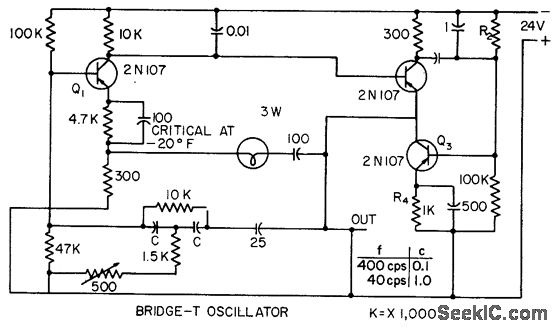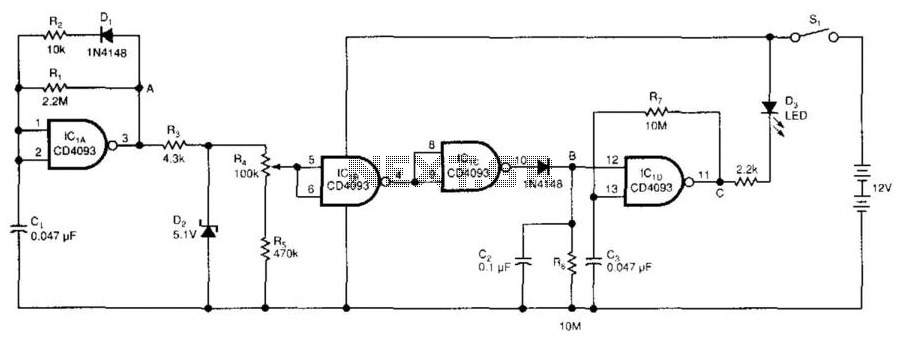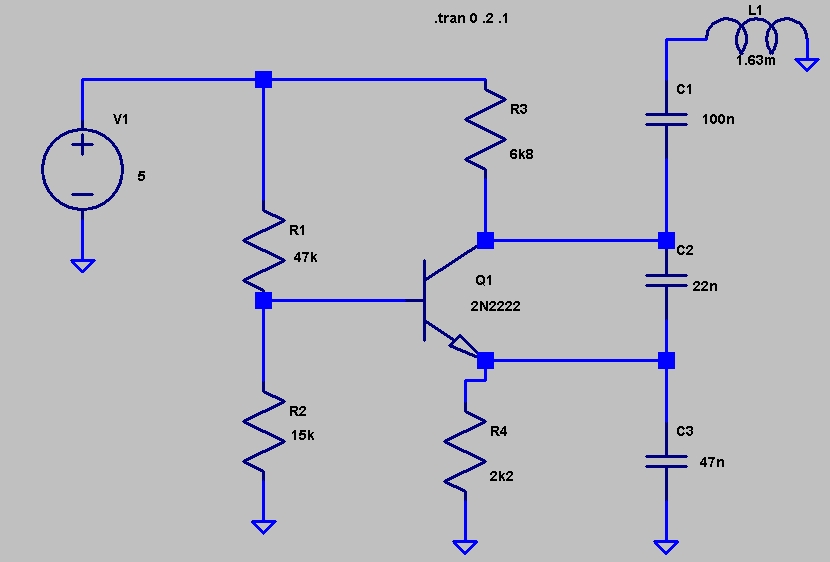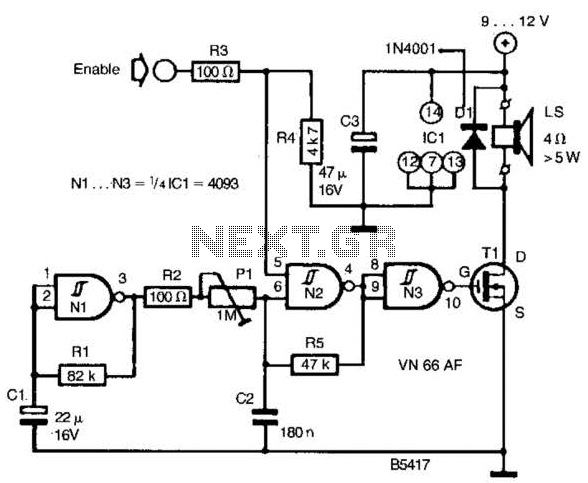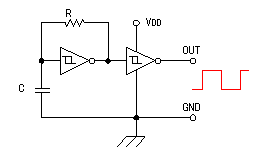
Low Distortion Oscillator
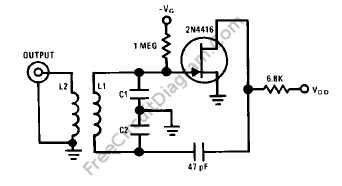
The 2N4416 JFET exhibits very low harmonic distortion, making it ideal for smooth oscillation in electronic circuits. It is particularly effective in applications where minimal harmonic content is essential for high-performance mixer circuits. Below is the circuit diagram of a Low Distortion Oscillator.
The 2N4416 JFET (Junction Field Effect Transistor) is a popular choice in oscillator designs due to its favorable characteristics, including low noise and low distortion. In a Low Distortion Oscillator circuit, the 2N4416 can be configured as a common source amplifier, which allows for the generation of stable oscillations with minimal harmonic interference.
Typically, the circuit consists of the 2N4416, resistors, capacitors, and an inductor, arranged to form a feedback loop. The feedback network is designed to set the frequency of oscillation, while ensuring that the output signal remains clean and free from unwanted harmonics. The choice of passive components is critical; for instance, using high-quality capacitors can further reduce noise and distortion.
The power supply for the circuit should be stable, as fluctuations can introduce additional distortion. A bypass capacitor may be included to filter out any high-frequency noise from the power supply. Additionally, the layout of the circuit board should be carefully considered to minimize parasitic capacitance and inductance, which can affect performance.
In applications such as RF mixers, the low harmonic distortion provided by the 2N4416 ensures that the output signal retains its integrity, allowing for better signal processing and improved overall system performance. The circuit can be tuned for various frequencies by adjusting the values of the reactive components, making it versatile for different applications in communications and signal processing.With very low harmonic distortion, 2N4416 JFET is suitable to smoothly oscillate in a circuit. On application where low harmonic content is required for a good mixer circuit, JFET local oscillator is very good. Below is the circuit diagram of Low Distortion Oscillator: 🔗 External reference
The 2N4416 JFET (Junction Field Effect Transistor) is a popular choice in oscillator designs due to its favorable characteristics, including low noise and low distortion. In a Low Distortion Oscillator circuit, the 2N4416 can be configured as a common source amplifier, which allows for the generation of stable oscillations with minimal harmonic interference.
Typically, the circuit consists of the 2N4416, resistors, capacitors, and an inductor, arranged to form a feedback loop. The feedback network is designed to set the frequency of oscillation, while ensuring that the output signal remains clean and free from unwanted harmonics. The choice of passive components is critical; for instance, using high-quality capacitors can further reduce noise and distortion.
The power supply for the circuit should be stable, as fluctuations can introduce additional distortion. A bypass capacitor may be included to filter out any high-frequency noise from the power supply. Additionally, the layout of the circuit board should be carefully considered to minimize parasitic capacitance and inductance, which can affect performance.
In applications such as RF mixers, the low harmonic distortion provided by the 2N4416 ensures that the output signal retains its integrity, allowing for better signal processing and improved overall system performance. The circuit can be tuned for various frequencies by adjusting the values of the reactive components, making it versatile for different applications in communications and signal processing.With very low harmonic distortion, 2N4416 JFET is suitable to smoothly oscillate in a circuit. On application where low harmonic content is required for a good mixer circuit, JFET local oscillator is very good. Below is the circuit diagram of Low Distortion Oscillator: 🔗 External reference

